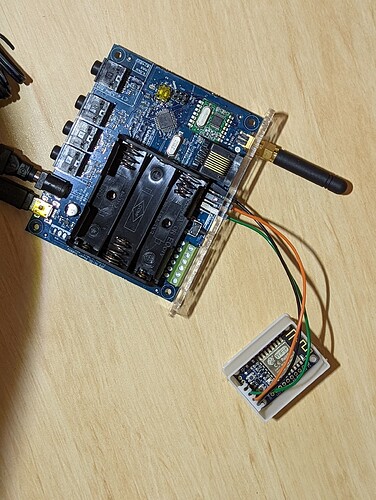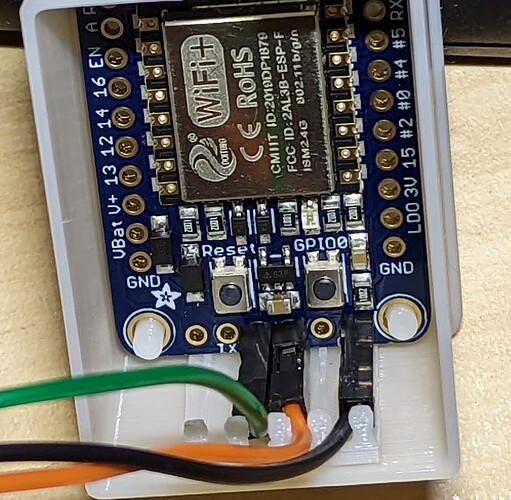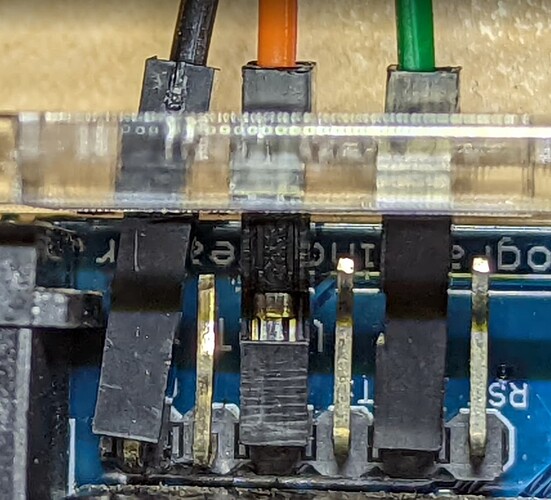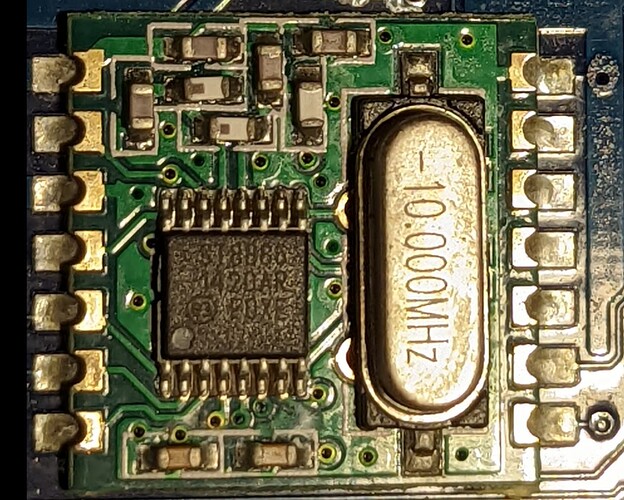The direction I am heading ’ is to send the data into my HomeAssistant instance via mqtt.
I didn’t make any changes so happy with that.
Ok, I am not sure what that means, are you referring to this? GitHub - openenergymonitor/EmonTxV3CM: EmonTxV3 Continuous Monitoring Firmware (Default shipped EmonTxV3 firmware)
I am the original owner (sometimes a bit lost but still the original owner) had this thing for several years now 
Not sure what that means sorry - is there a suggested thread/post/something?
Unless you mean this:
2022-03-28 11:03:31,362 INFO MainThread Creating EmonHubJeeInterfacer 'RFM2Pi'
2022-03-28 11:03:31,381 DEBUG MainThread Opening serial port: /dev/ttyAMA0 @ 38400 bits/s
2022-03-28 11:03:33,425 INFO MainThread RFM2Pi device firmware version: [RF12demo.12]
2022-03-28 11:03:33,429 INFO MainThread RFM2Pi device current settings: E i5 g210 @ 433 MHz
2022-03-28 11:03:33,434 INFO MainThread Setting RFM2Pi quiet: 0 (0q)
2022-03-28 11:03:34,449 INFO MainThread Setting RFM2Pi calibration: 230V (1p)
2022-03-28 11:03:35,453 DEBUG MainThread Setting RFM2Pi pubchannels: ['ToEmonCMS']
2022-03-28 11:03:35,457 DEBUG MainThread Setting RFM2Pi subchannels: ['ToRFM12']
2022-03-28 11:03:35,473 INFO MainThread Creating EmonHubMqttInterfacer 'MQTT'
2022-03-28 11:03:35,493 DEBUG MainThread Setting MQTT pubchannels: ['ToRFM12']
2022-03-28 11:03:35,507 DEBUG RFM2Pi acknowledged command: > 0q
2022-03-28 11:03:35,511 DEBUG MainThread Setting MQTT subchannels: ['ToEmonCMS']
2022-03-28 11:03:35,517 INFO MainThread Setting MQTT node_format_enable: 1
2022-03-28 11:03:35,520 INFO MainThread Setting MQTT nodevar_format_enable: 1
2022-03-28 11:03:35,522 INFO MainThread Setting MQTT nodevar_format_basetopic: emon/
2022-03-28 11:03:35,541 INFO MainThread Creating EmonHubEmoncmsHTTPInterfacer 'emoncmsorg'
2022-03-28 11:03:35,559 DEBUG MainThread Setting emoncmsorg pubchannels: ['ToRFM12']
2022-03-28 11:03:35,561 DEBUG MainThread Setting emoncmsorg subchannels: ['ToEmonCMS']
2022-03-28 11:03:35,564 WARNING MainThread Setting emoncmsorg apikey: obscured
2022-03-28 11:03:35,574 INFO MainThread Setting emoncmsorg url: https://emoncms.org
2022-03-28 11:03:35,577 INFO MainThread Setting emoncmsorg senddata: 1
2022-03-28 11:03:35,579 INFO MainThread Setting emoncmsorg sendstatus: 1
2022-03-28 11:03:35,677 DEBUG RFM2Pi device settings updated: E i5 g210 @ 433 MHz
2022-03-28 11:03:35,810 DEBUG RFM2Pi acknowledged command: > 1p
2022-03-28 11:03:36,183 DEBUG RFM2Pi acknowledged command: <nn> i - set node ID (standard node ids are 1..30)
2022-03-28 11:03:36,341 DEBUG RFM2Pi acknowledged command: <n> b - set MHz band (4 = 433, 8 = 868, 9 = 915)
2022-03-28 11:03:36,493 DEBUG RFM2Pi acknowledged command: <nnnn> o - change frequency offset within the band (default 1600)
2022-03-28 11:03:37,024 DEBUG RFM2Pi acknowledged command: <nnn> g - set network group (RFM12 only allows 212, 0 = any)
2022-03-28 11:03:37,202 DEBUG RFM2Pi acknowledged command: <n> c - set collect mode (advanced, normally 0)
2022-03-28 11:03:37,489 DEBUG RFM2Pi acknowledged command: ...,<nn> a - send data packet to node <nn>, request ack
2022-03-28 11:03:37,629 DEBUG RFM2Pi acknowledged command: ...,<nn> s - send data packet to node <nn>, no ack
2022-03-28 11:03:37,943 DEBUG RFM2Pi acknowledged command: <n> q - set quiet mode (1 = don't report bad packets)
2022-03-28 11:03:38,183 DEBUG RFM2Pi acknowledged command: <n> x - set reporting format (0: decimal, 1: hex, 2: hex+ascii)
2022-03-28 11:03:38,609 DEBUG RFM2Pi acknowledged command: <hchi>,<hclo>,<addr>,<cmd> f - FS20 command (868 MHz)
2022-03-28 11:03:38,846 DEBUG RFM2Pi acknowledged command: <addr>,<dev>,<on> k - KAKU command (433 MHz)
2022-03-28 11:03:39,124 DEBUG RFM2Pi device settings updated: E i5 g210 @ 433 MHz
2022-03-28 11:03:41,694 DEBUG RFM2Pi 7 NEW FRAME : OK 10 0 0 0 0 0 0 0 0 50 91 0 0
Also I have tried to ‘help myself’ but am uncertain if I have this scenario “rfm12b based RFM2Pi”









